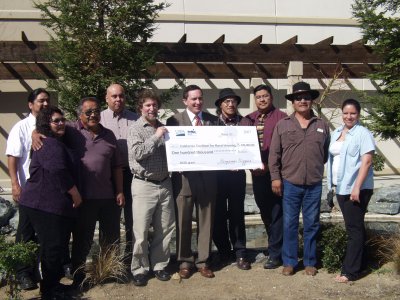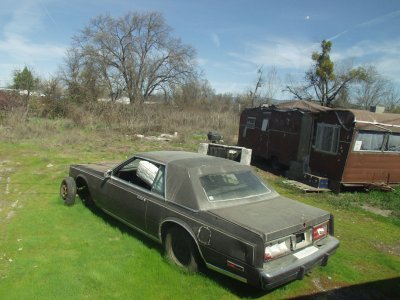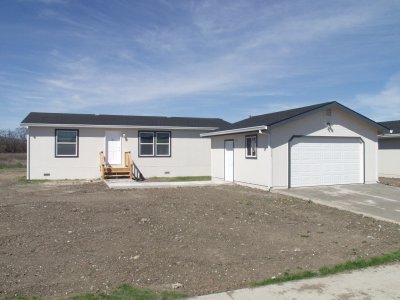
LAKE COUNTY – Five local American Indian tribes have received a $100,000 federal grant to help them improve housing in their communities.
The U.S. Department of Agricultural Rural Development visited Big Valley Rancheria's Konocti Vista Casino Thursday to make the official presentation to the tribes, which include Big Valley, Scotts Valley Band of Pomo Indians, Habematolel Pomo of Upper Lake, Robinson Rancheria and Elem Indian Colony.
The grant funds will be used to provide training and technical assistance to assist tribes in acquiring and developing land for housing projects and related infrastructure, rehabilitating and building housing, and operating housing assistance programs, the agency reported.
State USDA Rural Development Director Ben Higgins came for the event. He said the grant is modest when considering the nearly $80 million the agency has awarded over the last seven years to help foster growth in business development, homeownership and infrastructure in rural communities.
However, Higgins said in the case of Lake County's tribes, “Money alone isn't the answer,” and that it's necessary to have an element of community leadership as well.
“There are unique and pressing problems we're looking to address,” he said, which include a poverty rate of 17 percent in Lake County, which is five points above the state average.
Also on hand was Rob Wiener of California Coalition for Rural Housing. That organization is partnering with the tribes on an implementation plan for the grant, which includes conducting an analysis to identify each tribe's training and housing needs, training in affordable housing and training for housing and community development applications.
By funding that important training, said Higgins, the grant will help the tribes plan for the future.
This is one of the first grants the agency has been able to award in this fiscal year, said Higgins, which has been delayed in Congress.
The California Coalition for Rural Housing has done numerous farmworker housing projects, said Wiener, but tribal housing is a brand new experience for them. He said the coalition hopes to see if they can get existing housing programs to work for the county's tribes.
“We see this as a wonderful opportunity to learn about tribal housing issues,” he said.
The visitors from USDA Rural Development and California Coalition for Rural Housing also had what Higgins called an “eye opening” experience.
That came in the form of a tour of Big Valley Rancheria's housing conditions, led by Tribal Administrator Anthony Jack and Linda Hedstrom, the tribe's housing director.
“We're going to dispel the myth that all gaming tribes are rich,” said Jack.
What they showed were conditions that Wiener and Higgins said were some of the worst they had ever witnessed: numerous travel trailers clustered around each other, hooked up to hoses for running water; badly dilapidated homes and trailer houses that looked barely habitable.
And yet they sit in a beautiful area looking out on the lake, on land that Hedstrom called “an incredible, priceless piece of property.”
Even the rancheria's construction department lacked heating, wheelchair access and hot water, said Hedstrom.
“All tribes around here have the same stories,” said Hedstrom.
About 200 of the tribes 860 members live on the Rancheria, said Jack. Hedstrom said many more would like to return to the rancheria to live in their native communities, but the tribe needs more land and better housing.
They're hoping to expand the rancheria, said Hedstrom. While there's prospective land nearby, she said, the owners usually ask exorbitant prices.
The perception, said Jack, is that the tribe has a lot of money thanks to the casino, but that's wrong. Due to competition, he said, “It's hard to make a buck right now.”
That's one reason why the rancheria aggressively pursues grants, said Hedstrom.
The tribe recently put in 10 new manufactured homes next to 10 newer stick-built homes along Yellow Hammer Lane. Hedstrom said they had many people on a list for those manufactured homes. The families which received the homes were determined by lottery, she said, and began moving in at the start of March.
Hedstrom said the tribe wants to hold a construction boot camp, similar to one which has been held successfully in Lake County over the past few years, in order to help tribal members learn how to assist in building their own homes.
Afterward, Higgins said, “The housing conditions here are some of the worst in the state, if not the country.”
For more in USDA Rural Development's programs, visit www.rurdev.usda.gov/ca.
E-mail Elizabeth Larson at This email address is being protected from spambots. You need JavaScript enabled to view it..


{mos_sb_discuss:2}